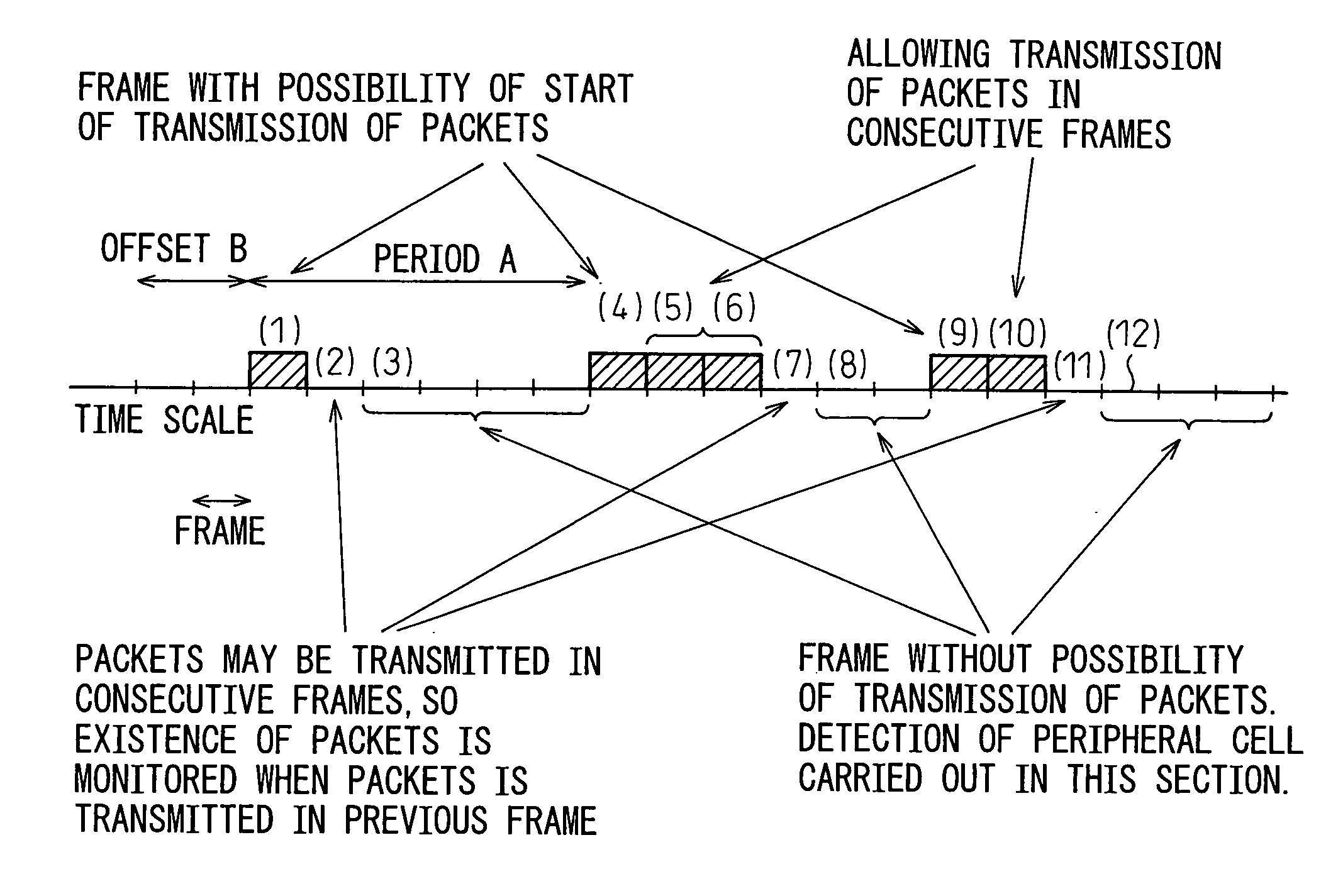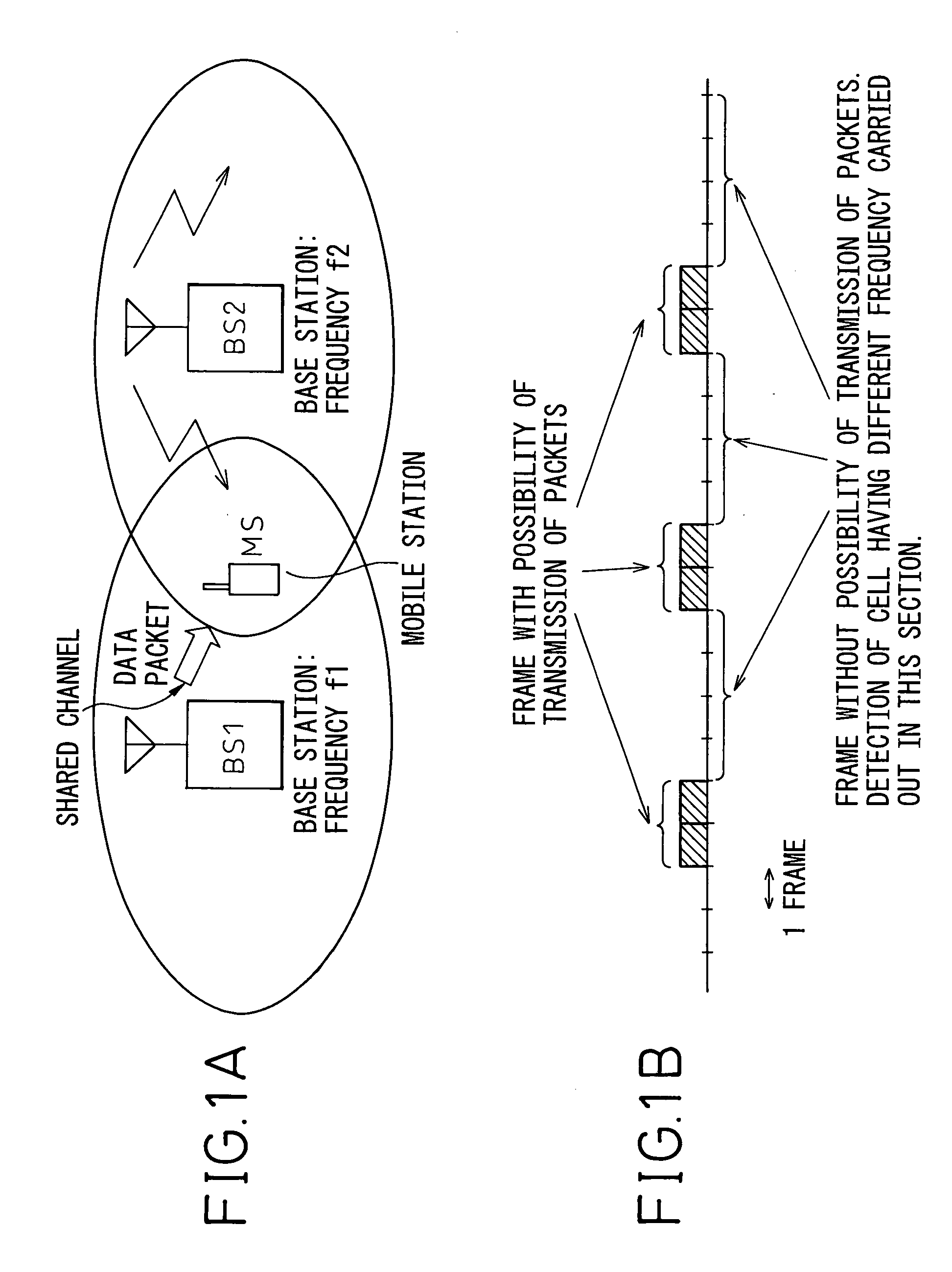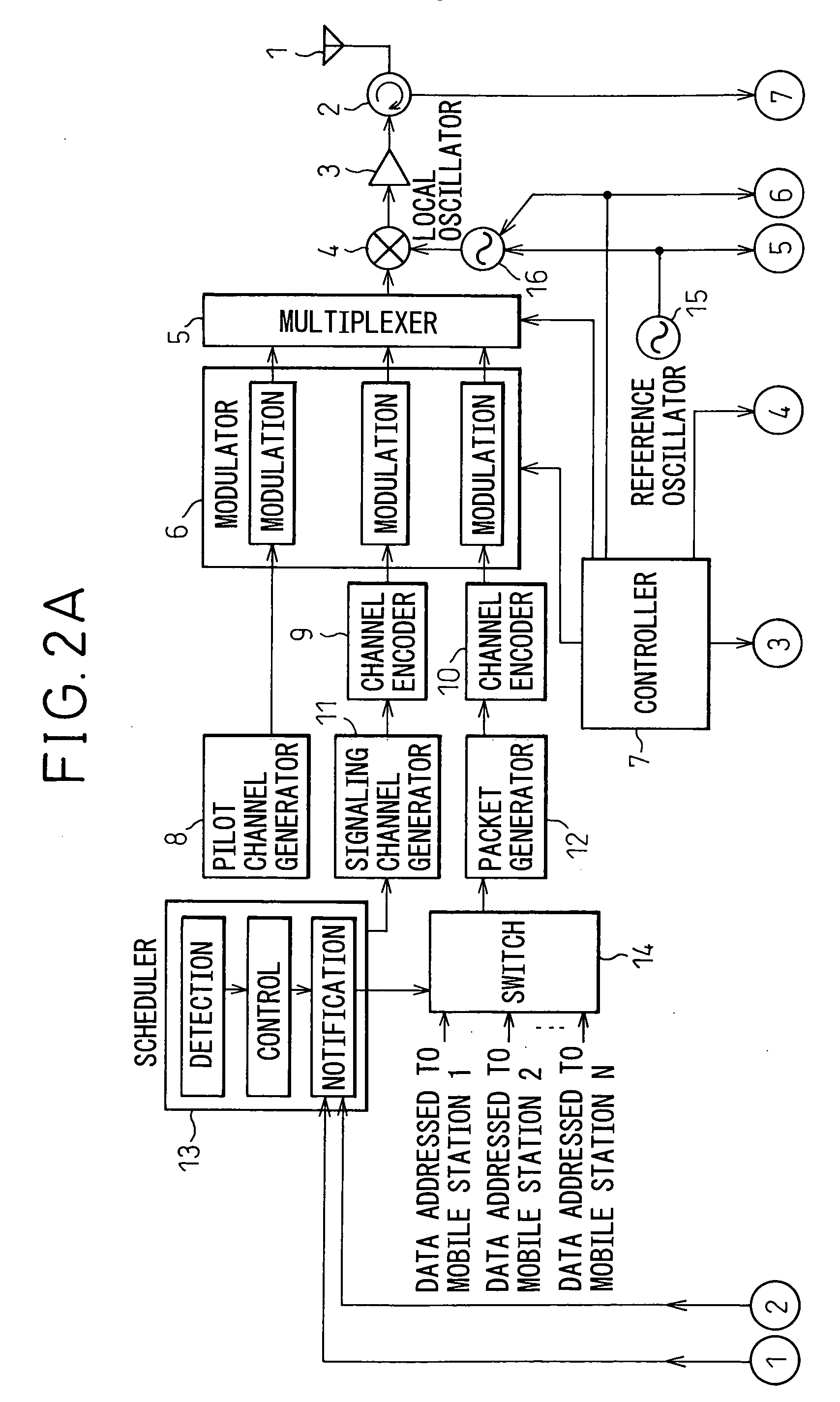Wireless communications system, base station, and mobile station
a wireless communication and mobile station technology, applied in the direction of frequency-division multiplex, instruments, synchronisation arrangement, etc., can solve the problems of inability to efficiently detect the peripheral cell, inability to receive data, and inability to provide a receiving unit merely for the detection of the peripheral cell, etc., to achieve the effect of suppressing the drop in transmission efficiency and preventing the loss of transmission packets
- Summary
- Abstract
- Description
- Claims
- Application Information
AI Technical Summary
Benefits of technology
Problems solved by technology
Method used
Image
Examples
first embodiment
[0068]FIGS. 1A and 1B are explanatory views of a first embodiment of the present invention, in which FIG. 1A shows an outline of the wireless communications system and shows a case of a wireless communications system where a base station BS1 transmits data at a frequency f1 and a base station BS2 transmits data by a frequency f2 (frequency different from f1). It should be noted that as an example, the present invention is described in conjunction with the previously explained WCDMA mobile communications system, but, other systems, such as, mobile communications systems employing HSPDA and next generation mobile communications systems can also be used in conjunction the present invention without departing from the scope of the present invention.
[0069] The mobile station MS wirelessly communicates with the base station BS1 (during service for reception of data via a shared channel as in the HSDPA). When moving to the direction of the base station BS2 while receiving packets, the rece...
second embodiment
[0094]FIGS. 4A and 4B are explanatory views of a second embodiment of the present invention, in which FIG. 4A is a schematic view of a wireless communications system. The base stations BS1 and BS2 are systems for transmission and reception in a wireless communications system where the wireless access schemes can be, for example, W-CDMA or OFDM-based schemes. The base station BS1 uses a wireless scheme 1, while the base station BS2 uses a wireless scheme 2. When a mobile station MS engages in wireless communications with the base station BS1 and moves in the direction of the base station BS2 while receiving the data packets, the reception quality from the base station BS1 is gradually lowered. Therefore, the processing for detection of a peripheral cell becomes necessary for handover.
[0095] In this case, the base station BS2 of the peripheral cells is configured to transmit by the wireless scheme 2, therefore the mobile station MS cannot simultaneously handle the wireless schemes 1 ...
third embodiment
[0098]FIGS. 5A and 5B are explanatory views of a third embodiment and a fourth embodiment of the present invention. The third embodiment of the present invention shown in FIG. 5A shows a case of using the procedures of the following (1) to (6) when shifting to the peripheral cell detection mode. That is,
[0099] (1) when the base station or the mobile station detects the conditions for shift to the peripheral cell detection mode due to the drop of the reception quality etc. in the normal mode,
[0100] (2) information of (1) is notified / communicated between the base station and the mobile station, and information concerning the frames with the possibility of transmission of packets in the peripheral cell detection mode (parameters such as the period A and offset value B and duration) are notified from each other;
[0101] (3) the above (2) is acknowledged;
[0102] (4) the mobile station shifts to the peripheral cell detection mode by confirming the acknowledgement,
[0103] (5) the mobile s...
PUM
 Login to View More
Login to View More Abstract
Description
Claims
Application Information
 Login to View More
Login to View More - R&D
- Intellectual Property
- Life Sciences
- Materials
- Tech Scout
- Unparalleled Data Quality
- Higher Quality Content
- 60% Fewer Hallucinations
Browse by: Latest US Patents, China's latest patents, Technical Efficacy Thesaurus, Application Domain, Technology Topic, Popular Technical Reports.
© 2025 PatSnap. All rights reserved.Legal|Privacy policy|Modern Slavery Act Transparency Statement|Sitemap|About US| Contact US: help@patsnap.com



